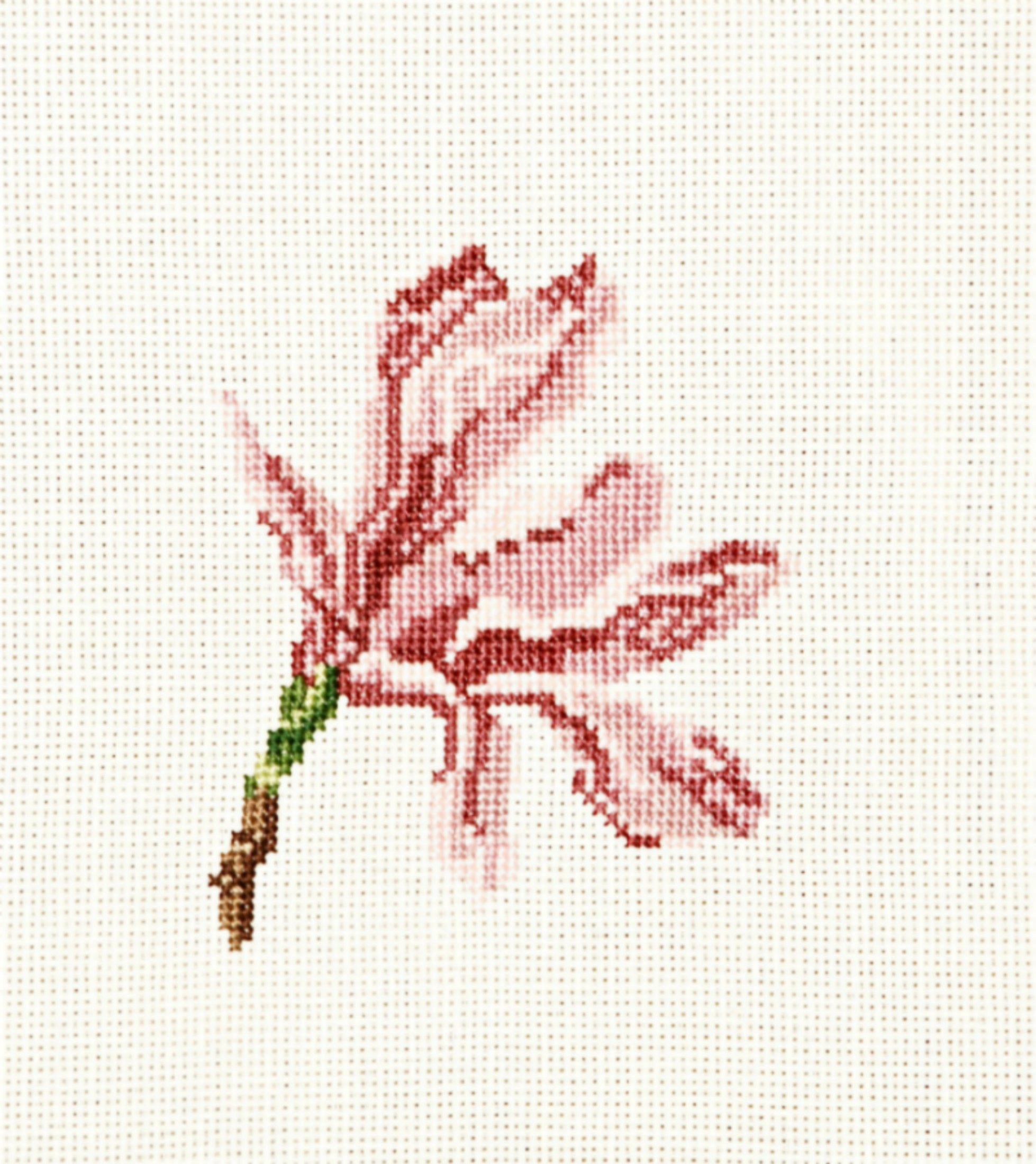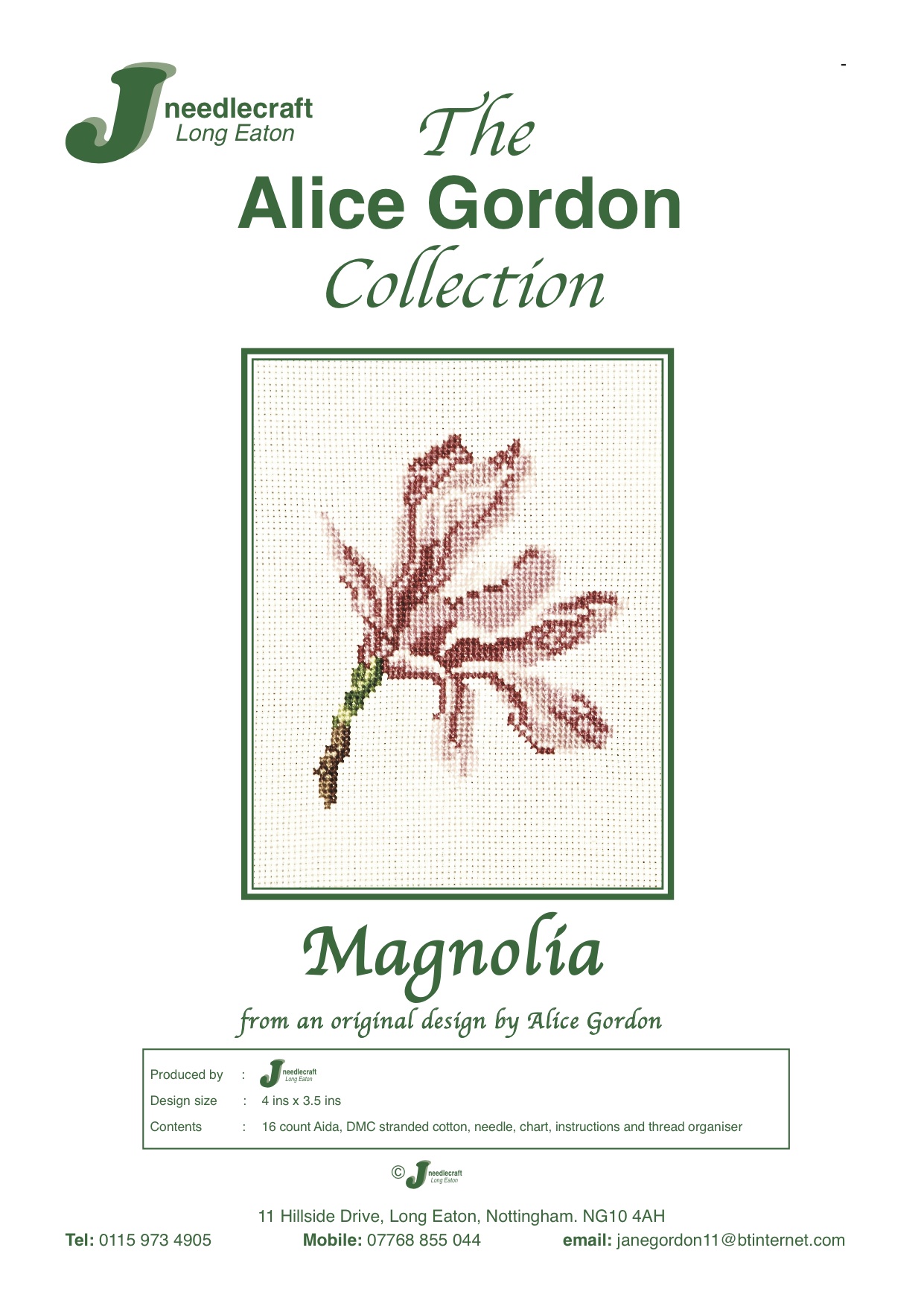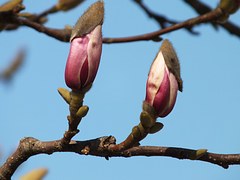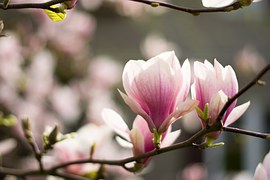Magnolia Flower Head Cross Stitch Kit
The Magnolia flower head cross stitch kit is part of our botanical range
Magnolia
Magnolia flower cross stitch kit
The flower of the Magnolia tree is quite spectacular and lends itself to a cross stitch picture, it seems to me to be an exotic and oriental flower which I associate with Chinese and Japanese art and I’m not the only one to love this flower! My grandmother-in-law, Alice Gordon painted this flower head circa 1915 – 17 and I have been lucky enough to transform it into a cross stitch kit to add to our botanical range.
Did you know?
The Magnolia is a very popular spring flowering shrub or tree named after the French botanist Pierre Magnol, it is a very old genus and fossilised specimens of Magnolia acuminata dating back 20 million years have been found. Such an ancient species was around before bees so it relied on beetles for pollination, it is theorised that the carpels of the Magnolia are especially tough in order to withstand damage from these insects.
Magnolias are found naturally throughout the world but are widely found in east and south east Asia with a secondary centre in the Americas and the West Indies.
There are now many varieties of Magnolias ranging in colour from palest pink and cream to deep purple.
In traditional Chinese medicine the bark and flower buds of Magnolia officialis have been used for centuries to generally support the body and nurture wellbeing. It is also used to treat intestinal problems, coughs and colds
In Japan the flowers are sometimes used to wrap food or as cooking dishes. Magnolia obovata is used in Japanese medicine
In the United States Magnolia acuminata grows big enough to harvest for timber and is sold as ‘yellow poplar’, also, Magnolia fraseri sometimes grows big enough to be harvested.






